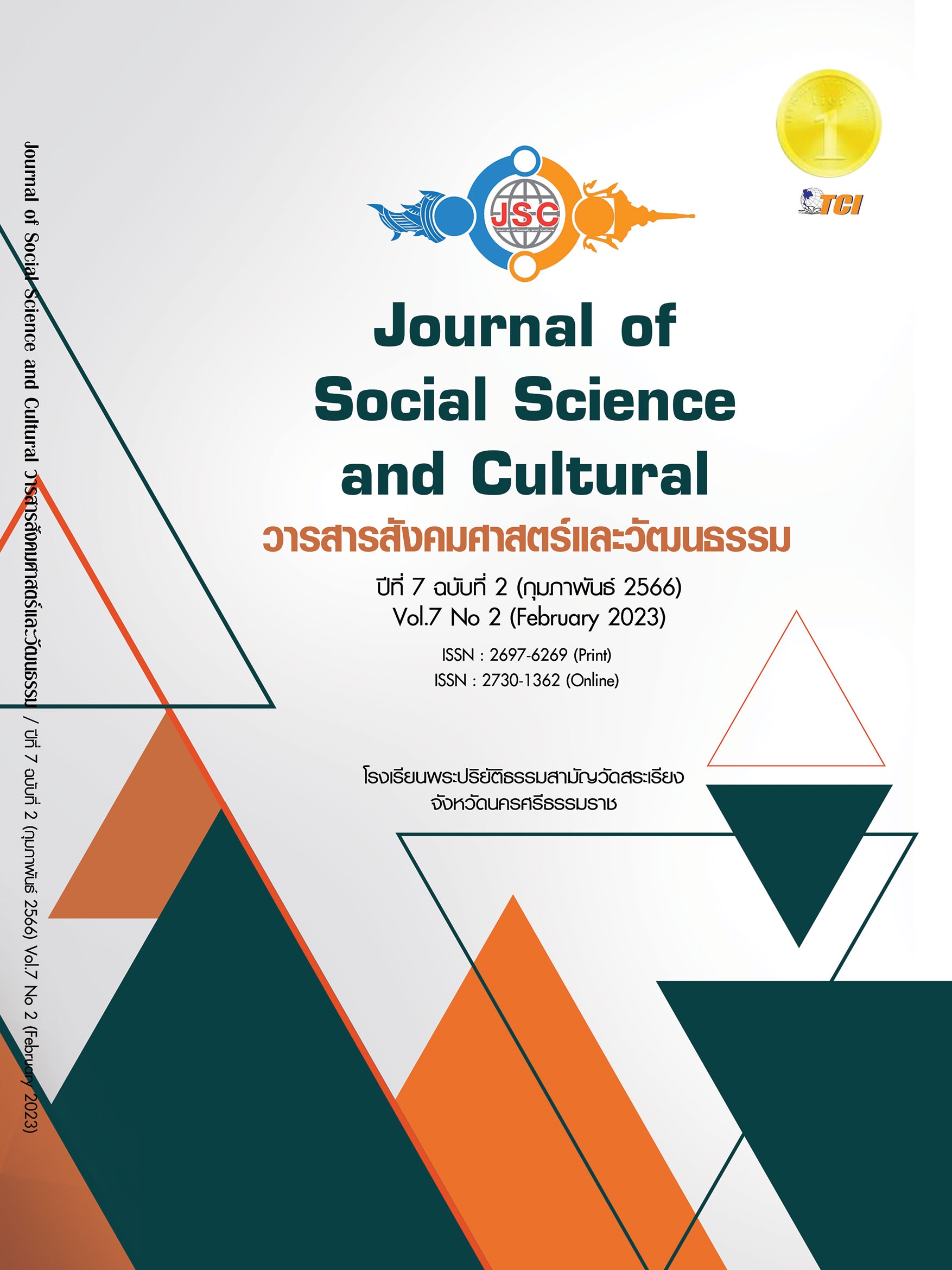DEVELOPMENT OF INFORMATION SYSTEMS FOR INTERNSHIPS STUDENTS WITH MVC ARCHITECTURE
Main Article Content
Abstract
The objectives of this research were 1) to develop an information system for information management of students in internship, 2) to assess the satisfaction of users of the information system for interns, and 3) to evaluate the efficiency of the information system for interns. This research is research and development use SDLC system development principles. The procedure starts from collection of requirements, feasibility study, and needs analysis, summarizing a requirement into a document, verification of requirements, design and development of information systems, validation and evaluations of information systems. Information system development for this internship the researcher develops it as a web application. The structure of the MVC architecture is to separate display, processing, and data management from each other. The information system for interns divides system users into 3 groups: system administrators, lecturers and students. With experts in information technology assess the efficiency of the software of 5 people and assess the satisfaction of the software from user sample group of 249 people. Information system efficiency assessment result was found to be at a high level with an average of 3.85, a standard deviation of 0.59. The satisfaction assessment results of information system users for interns found that they were at the highest level. The mean was 4.72 with a standard deviation of 0.49. It can be concluded that the developed information system can meet the needs of users.
Article Details
References
กระทรวงเทคโนโลยีสารสนเทศและการสื่อสาร. (2559). แผนพัฒนาดิจิทัลเพื่อเศรษฐกิจและสังคม. กรุงเทพมหานคร: โรงพิมพ์กระทรวงเทคโนโลยีสารสนเทศและการสื่อสาร.
ภานุวัฒน์ ขันจา. (2565). การออกแบบและพัฒนาศูนย์ข้อมูลการวิจัยเชิงพื้นที่สำหรับมหาวิทยาลัยราชภัฏอุตรดิตถ์. วารสารวิชาการคณะเทคโนโลยีอุตสาหกรรม มหาวิทยาลัยราชภัฏลำปาง, 15(1), 37-49.
วิวัฒน์ ชินนาทศิริกุล. (2561). การพัฒนาระบบภาวะการมีงานทำของบัณฑิต มหาวิทยาลัยราชภัฏไลยอลงกรณ์ ในพระบรมราชูปถัมภ์. วารสารวิจัยและพัฒนาวไลยอลงกรณ์ ในพระบรมราชูปถัมภ์, 13(1), 32-41.
สำนักงานเลขาธิการสภาการศึกษา กระทรวงศึกษาธิการ. (2560). แผนการศึกษาแห่งชาติ พ.ศ. 2560-2579. กรุงเทพมหานคร: สำนักงานเลขาธิการสภาการศึกษา.
Gupta, P. & Govil, M. C. (2010). MVC Design Pattern for the multi framework distributed applications using XML, spring and struts framework. International Journal on Computer Science and Engineering, 2(4), 1047-1051.
Gurung, G. et al. (2020). Software Development Life Cycle Models-A Comparative Study. International Journal of Scientific Research in Computer Science, Engineering and Information Technology, March, 6(4), 30-37.
Hassan, M. et al. (2019). A policy recommendations framework to resolve global software development issues. In 2019 International Conference on Innovative Computing (ICIC) (pp. pp. 1-10). IEEE.
Ismail, F. K. M. & Zubairi, A. M. B. (2022). Item Objective Congruence Analysis for Multidimensional Items: Content Validation of a Reading Test in Sri Lankan University. English Language Teaching, 15(1), 106-117.
Leau, Y. B. et al. (2012). Software development life cycle AGILE vs traditional approaches. In International Conference on Information and Network Technology , 37(1), 162-167.
Menezes, J. et al. (2019). Risk factors in software development projects: a systematic literature review. Software Quality Journal, 27(3), 1149-1174.
Paolone, G. et al. (2020). Automatic code generation of MVC web applications. Retrieved 3 9, 2556, from https://doi.org/10.3390/computers9030056
Sommerville, I. (2011). Software Engineering. (9th ed)Massachusetts, United State. America: Addison-Wesley.
Sunardi, A. (2019). MVC architecture: A comparative study between laravel framework and slim framework in freelancer project monitoring system web based. Procedia Computer Science, 157(2019), 134-141.
Yamashita, T. (2022). Analyzing Likert scale surveys with Rasch models. Retrieved 3 1, 100022, from https://doi.org/10.1016/j.rmal.2022.100022


